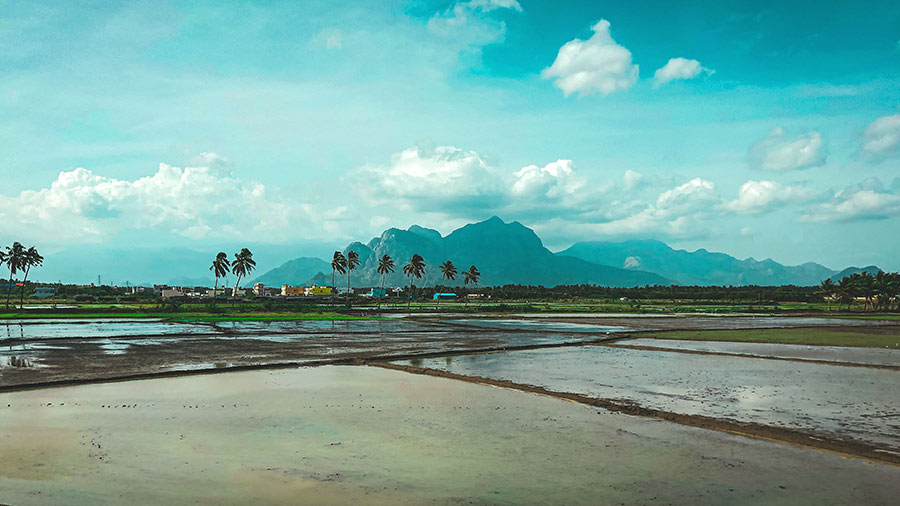Protecting and managing intellectual property rights (IPR) is the first step for any business seeking to establish its presence and must be incorporated as an integral part of the business asset growth strategy.
India is a signatory to the following international IP agreements:
- Paris Convention;
- Berne Convention;
- Madrid Protocol; and
- Patent Cooperation Treaty.
In this article, we provide a brief overview of the IPR system in India and enumerate its component laws and basic procedures for registration.
Patents
- Laws: Patents Act, 1970; Patents (Amendment) Act, 2005.; Patents Rules, 2003; Patent (Amendment) Rules, 2020
Relevant Ministr: Office of the Controller General of Patents, Designs and Trade Marks (Indian Patent Office), Department for Promotion of Industry and Internal Trade (DPIIT), Ministry of Commerce and industry. India grants patent rights on a first-to-apply basis. The application for a patent can be made by either:
- The inventor;
- The assignee; or
- The legal representative of the inventor.
Patent application may also be made jointly by two or more corporations as assignees. A foreign national resident can also apply and obtain a patent in India.
Patent registration procedure
- Patentability search: The uniqueness, ingenuity, industrial applicability, and enablement of the invention are evaluated through a patentable search.
- Drafting the patent application: If an invention is found to be patentable following a search, the applicant must write a patent application that details the invention. The first step after drafting a patent application is to file the patent application.
- Filing a patent application: Applications must include the invention’s specifications as well as any other necessary or pertinent information. To obtain a patent registration for their innovation, an applicant may submit both a provisional and a full application.
- Publication of application: The Indian patent Office (IPO) publishes the application in the official patent journal, making it available in the public domain after 18 months from the date of filling or priority. An early publication request is possible.
- Examination of application: After publication, the patent office examines the application. Unlike publication, examination doesn’t occur automatically upon filing.
- Objection by the Examiner: The Examiner scrutinizes the application and issues a report stating all objections related to the application, based on the information mentioned in the application.
- Office action response: The applicant must respond to the Examiner’s objections to receive a patent grant. They have a maximum of six months from the first examination report’s issuing date to respond. The duration can be extended by three months with a request to the IPO.
- Grant of patent registration: Once the application addresses all the objections raised by the Examiner, the patent office grants the patent registration and publishes it in the patent gazette.
Documents required for patent registration
|
Form 1: Application for grant of patent |
|
|
Form 2: Provisional/complete specification
|
Form 2 is used to furnish your patent specification. It may be provisional or a complete patent specification depending on the type of patent application you are filing
|
|
Form 3: Statement and undertaking under Section 8
|
|
|
Form 5: Declaration as to inventorship
|
This application is used to declare the inventors of the current patent application
|
|
Technical information
|
|
|
Form 18 |
Request for Examination |
|
Form 19 |
Request for Early Publication |
|
Form 26 |
Disclosure of Power of Authority (If assigned to the Patent Agent)
|
|
Form 9 |
Request for Publication. This is optional if the express publication is required |
Trademarks
- Laws and regulation – Trademark Act, 1999; The Trade Marks (Amendment) Act, 2010; Trade Marks Rules, 2003; Trade Marks Rules, 2017
- Relevant ministry – DPIIT, Ministry of Commerce and Industry
Trademark registration procedure
- Conduct the trademark search
- Filing trademark application: The first and foremost step is to file the prescribed application at the Trademark Registry India. The applicant can also file the application online. After filing the said application, an acknowledgement receipt is generated by the official portal for future reference.
- Verification of application and documents: After filing an application with India's Trademark Registry, the scrutiny process begins and is conducted by a designated official known as an Examiner. The verification process can take around 12-18 months. After inspection, the Examiner may accept the mark unconditionally, conditionally, or object to it.
- If the mark is accepted unconditionally, it will be published in the Trademark Journal.
- If it is not accepted unconditionally, the Examiner will stipulate conditions to be met or objections that must be addressed. The applicant will be given one month to meet the conditions or respond to the objections. If the Examiner finds the applicant's response satisfactory, the trademark in question will be published in the Trademark Journal.
- If the response is not accepted, the applicant will have the chance to represent their case in a hearing. Upon receiving a satisfactory response from the applicant, the Examiner may render their approval and publish the concerned mark in the Trademark Journal.
- Publication of trademark in trademark journal: The publication of the mark in the trademark journal enables the authority to invite objections from third parties. If no objections are raised within the specified time frame. The authority can provide approval for the next step. On the contrary, if the mark somehow attracts some objections, the authority would conduct a fair hearing.
- Grant of trademark registration by registrar: The applicant is subsequently presented with a registration certificate by the registrar, which has a ten-year validity period. The trademark office seal must be included by the registrar on the certificate.
The whole process takes about 15 to 18 months. The trademark is valid for ten years starting from the date of issuance of the certificate. It can be renewed for another 10 years on the payment of the prescribed fees.
Documents required for trademark registration
- Applicant's identity proof;
- PAN;
- Aadhar card;
- Passport;
- Certificate of Incorporation (COI), in case of companies registered under Company Act, 2013;
- Logo if it is applicable and available; and
- Address proof.
Copyrights
- Laws and regulation – Copyrights Act 1957; The Copyright (Amendment) Act, 2012; Copyright (Amendment) Rules, 2021
- Relevant Ministry – Copyright Office, Ministry of Human Resource Development
Registration procedure for filing the copyright registration
- Create User ID and password at the official site copyright.gov.in.
- File application form: An applicant can apply either manually in the copyright office or through an e-filing facility available on the official website. Here, the applicant can be an author of the work or owner of an exclusive right for the work or an authorized agent.
- Examination of application: After the application is filed, the next step is the examination of the copyright application. A minimum waiting period of 30 days is provided for the copyright Examiner to review the application once the diary number is issued. The copyright registration process is then divided into two segments:
- Objections raised: If an objection is raised by someone against the applicant, a letter is sent to both parties, and they are called for a hearing by the registrar. If the objection is rejected upon hearing, the applicant can ask for scrutiny and the discrepancy procedure is followed.
- No objections raised: If no objections are raised, the Examiner reviews and scrutinizes the application for any disparities. If no discrepancies arise and all necessary documents are provided, the applicant can proceed to the next step. However, if inconsistencies are found, a letter of discrepancy is sent to the applicant. The applicant must reply, and a hearing is conducted by the registrar. Once the difference is resolved, the applicant can move on to the next step. If the difference cannot be resolved, the application is rejected, and a rejection letter is sent to the applicant.
- Issuance of registration certificate: The certificate of copyright registration is issued at the final stage. The Registrar could ask for more details or documents at this point. The information regarding the copyright application will be recorded into the register of copyrights, and a certificate of registration will be granted, if the Registrar is fully satisfied with the application made by the applicant.
Documents required for copyright registration
|
Basic documents |
|
|
Artistic work |
|
|
Cinematograph film |
|
|
Music |
|
|
Software |
|
Industrial designs
- Law and regulation – Designs Act, 2000; Designs Rules, 2001; The Designs (Amendment), Rules, 2021
- Relevant Ministry – DPIIT, Ministry of Commerce and industry
Industrial design registration procedure
- Examination: The Controller of Designs refers the application to an Examiner of Designs who checks if the application and documents meet formal requirements and if the design is registrable under the Designs Act and Rules.
- Formality check: The Examiner ensures that the application is in the prescribed format, fee is paid, applicant's details are provided, and declaration of proprietorship is given. The representation sheet is checked to ensure it complies with Rule 14, and a power of authority is filed if applicable.
- Substantive examination: The Examiner checks if the design is new, original, and not prejudicial to public order, morality, or security of India.
- Consideration of Examiner's report: If the design is eligible for registration, the Controller registers it and issues a certificate. If objections arise, the applicant is informed, and a statement of objections is communicated. The applicant must comply with the objections or apply for a hearing within three months. If the applicant fails to comply, the application is deemed withdrawn.
- Design registration and publication: Registered designs are published in the Patent Office Journal within one month of registration, and the registration number is the same as the application number.
- Register of Designs: All registered designs are entered in the Register of Designs maintained at the Patent Office in Kolkata, which is available for public inspection. An e-register is also available on the IPI official portal.
Once the application is accepted, it is notified in the patent office journal and is valid for a period of 10 years from the date of registration. The period may be extended by five years by filing an application for renewal along with the prescribed fee.
Documents required for design registration
To file a design application, certain documents and forms need to be prepared and submitted as per the designs rules. These include:
- Form 1, which should be filled in the prescribed format as mentioned in Schedule-II of the Designs Rules;
- Representations, which should be prepared as per Rule 12, 13, and 14 of the Designs Rules, and submitted in duplicate;
- Form-21, which is the Power of Authority/General Power of Authority (GPA), and should be submitted in the original if the application is filed through a patent agent or an advocate. This form is also mentioned in Schedule-II;
- If a copy of the GPA is filed, it should be endorsed with the design application number with which the original GPA was filed;
- Form-24 in the prescribed format should be submitted if the applicant is claiming small entity status, as mentioned in Schedule-II of the Designs Rules. If the applicant is an Indian entity, evidence of registration under the MSME Act, 2006 should also be provided. In the case of foreign entities, an affidavit should be deposed by the applicant or an authorized signatory as per Rule 42 of the Designs Rules;
- The original Priority document should be submitted under Rule 15 of the Designs Rules;
- An authenticated English translated copy of the priority document should be submitted if the original priority document is in a language other than English; and
- If the applicant of the priority application in the convention country is different from the Indian applicant, an Assignment in the original should be submitted.
Geographical indications
- Law and regulation – The Geographical Indications of Goods (Registration and protection) Act, 1999; The Geographical Indications of Goods (Registration and Protection) (Amendment) Rules, 2020
- Relevant Ministry – DPIIT, Ministry of Commerce and industry
Requirements for registering GI: Essential qualifications and prerequisites
To be eligible for registration of a geographical indication, certain prerequisites and qualifications must be fulfilled, which include:
- The product should originate from a specific geographical location;
- The product should have distinctive qualities, characteristics or reputation that are primarily associated with its geographical origin;
- The product should not fall under any prohibited categories such as generic names or indications that are against public order or morality;
- The applicant must be either an association of persons, producers or any organization that represents the interests of the producers; and
- The applicant should have a direct involvement in the production, marketing or sale of the product.
GI registration procedure
To register a geographical indication, the following steps need to be taken:
- Conduct a search to confirm that the proposed geographical indication is not already registered or pending registration;
- Prepare the application for registration of the geographical indication in the prescribed form, along with the required documents;
- File the application with the Geographical Indications Registry, along with the prescribed fee;
- The Geographical Indications Registry examines the application to ensure that it meets the eligibility criteria and prerequisites for registration;
- If the application is accepted, the geographical indication is published in the Geographical Indications Journal;
- Any individual may oppose the registration of the geographical indication within three months of its publication in the Geographical Indications Journal; and
- If there is no opposition or the opposition is dismissed, the geographical indication is registered, and the registered proprietor has the right to use the registered GI tag on the product.
The registration of a geographical indication is valid for a period of 10 years. It can be renewed from time to time for a further period of 10 years each.
Documents required for GI registration
- Application for registration in the prescribed form;
- Statement of case;
- Details of the product, including its unique features, method of production, and the link between the product and its geographical origin;
- Evidence to establish the link between the product and its geographical origin, such as maps, photographs, and historical records;
- Authorization letter, if the application is filed by an agent;
- Power of attorney, if the application is filed by a legal representative; and
- Certified copy of the priority document, if applicable.











